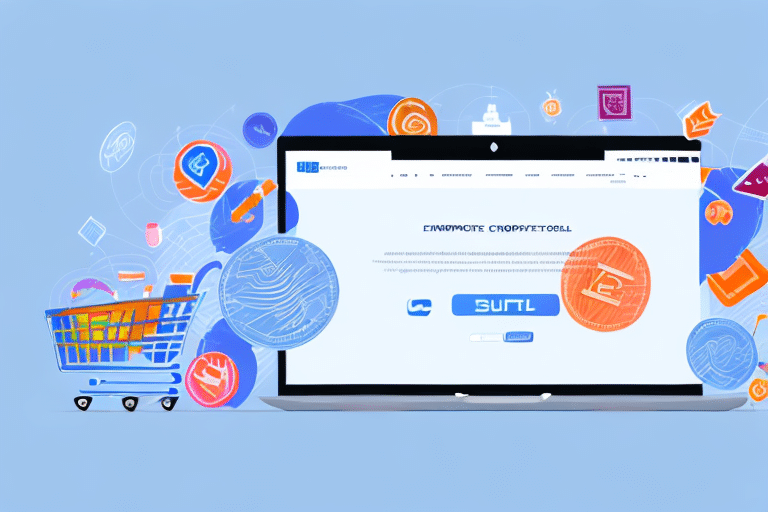The Top 10 Essential Tools for Ecommerce Businesses in 2024
Running an ecommerce business involves managing various facets, from inventory and payments to marketing and customer relationships. To ensure your online store operates seamlessly and remains competitive, leveraging the right set of tools is crucial. This comprehensive guide explores the top 10 tools every ecommerce business should consider in 2024, providing in-depth analysis, relevant data, and insights to help you make informed decisions.
1. Ecommerce Platforms
Ecommerce platforms serve as the foundation of your online store, enabling you to build your storefront, manage products, and process transactions. Choosing the right platform can significantly impact your business's scalability and functionality.
Popular Ecommerce Platforms
- Shopify: Known for its user-friendly interface and extensive app ecosystem, Shopify is ideal for businesses of all sizes.
- WooCommerce: A flexible, open-source platform that integrates seamlessly with WordPress, making it a favorite for content-driven sites.
- Magento: Now part of Adobe Commerce, Magento offers robust features suitable for large-scale and enterprise-level businesses.
Key Features to Consider
- Scalability: Ensure the platform can grow with your business.
- Customization: Look for platforms that allow extensive customization to match your brand.
- Integrations: Check compatibility with other tools you use, such as CRM and inventory management systems.
For a detailed comparison of ecommerce platforms, visit Shopify Guides and WooCommerce Features.
2. Inventory Management Systems
Efficient inventory management is critical to prevent stockouts and overstock situations, ensuring that you meet customer demand without tying up excessive capital.
Top Inventory Management Tools
- SkuVault: Offers real-time inventory tracking and integrates with major ecommerce platforms.
- TradeGecko (now QuickBooks Commerce): Provides comprehensive inventory and order management features.
- Cin7: Combines inventory management with point-of-sale and third-party logistics.
Benefits of Advanced Inventory Systems
- Demand Forecasting: Utilize sales data to predict future demand and adjust inventory levels accordingly.
- Automation: Reduce manual errors with automated reorder points and stock alerts.
- Integration: Seamlessly connect with other business tools to streamline operations.
Learn more about effective inventory management at TradeGecko Blog.
3. Payment Gateways
Secure and efficient payment processing is vital for enhancing customer trust and ensuring smooth transactions.
Leading Payment Gateways
- PayPal: Widely recognized and trusted, offering easy integration options.
- Stripe: Known for its developer-friendly APIs and customizable payment solutions.
- Authorize.net: Provides reliable payment processing with robust security features.
Factors to Consider When Choosing a Payment Gateway
- Transaction Fees: Compare the cost per transaction among different providers.
- Security: Ensure the gateway complies with PCI DSS standards to protect customer data.
- Integration Ease: Choose gateways that integrate smoothly with your ecommerce platform.
For more information on selecting a payment gateway, visit PayPal Fees and Stripe Pricing.
4. Shipping and Fulfillment Platforms
Efficient shipping and fulfillment processes are essential for timely deliveries and customer satisfaction.
Top Shipping and Fulfillment Tools
- ShipStation: Offers comprehensive shipping solutions with integrations to major carriers.
- Shippo: Provides affordable shipping options and easy label generation.
- EasyPost: Simplifies shipping logistics with a user-friendly API.
Key Features to Look For
- Rate Comparison: Automatically compare shipping rates from different carriers to find the best deals.
- Tracking: Offer real-time tracking to keep customers informed about their orders.
- Returns Management: Streamline the return process with automated return labels and tracking.
Explore more about shipping solutions at ShipStation Features and Shippo Features.
5. Customer Relationship Management (CRM) Software
CRM software helps businesses manage customer interactions, improve relationships, and drive sales growth.
Top CRM Solutions for Ecommerce
- Salesforce: A powerful CRM platform with extensive customization and integration options.
- Zoho CRM: Offers a balance of features and affordability, suitable for small to medium-sized businesses.
- HubSpot: Provides a free tier with essential CRM functionalities and seamless marketing integrations.
Benefits of Using CRM Software
- Customer Data Management: Centralize customer information for easy access and analysis.
- Marketing Automation: Automate email campaigns and follow-ups to engage customers effectively.
- Sales Tracking: Monitor sales performance and identify opportunities for growth.
Discover more about CRM benefits at Salesforce CRM and HubSpot CRM.
6. Email Marketing Automation Software
Automated email campaigns can enhance customer engagement, increase retention, and drive sales.
Leading Email Marketing Tools
- Mailchimp: Offers a user-friendly interface with robust automation and analytics features.
- Klaviyo: Tailored for ecommerce, providing advanced segmentation and personalization.
- Sendinblue: Combines email marketing with SMS campaigns and marketing automation.
Advantages of Email Automation
- Personalization: Send targeted messages based on customer behavior and preferences.
- Efficiency: Automate repetitive tasks, saving time and reducing manual errors.
- Analytics: Track campaign performance to optimize future strategies.
Learn more about email marketing strategies at Mailchimp Guides and Klaviyo Resources.
7. Social Media Management Tools
Managing your social media presence efficiently can boost brand awareness and drive traffic to your ecommerce store.
Top Social Media Management Platforms
- Hootsuite: Supports multiple social networks and offers comprehensive scheduling and analytics.
- Buffer: Known for its simplicity and effective scheduling tools.
- Sprout Social: Provides advanced analytics and social listening features.
Key Features to Consider
- Scheduling: Plan and automate posts across various platforms.
- Analytics: Measure engagement and performance metrics to refine your strategy.
- Collaboration: Enable team collaboration with role-based access and centralized workflows.
Explore more about social media tools at Hootsuite Features and Buffer Features.
8. Analytics and Reporting Software
Understanding your website traffic and customer behavior is crucial for making data-driven decisions.
Top Analytics Tools for Ecommerce
- Google Analytics: Offers comprehensive tracking and reporting features for free.
- Kissmetrics: Focuses on customer behavior analytics to boost sales and retention.
- Mixpanel: Provides advanced analytics with a focus on user interactions and events.
Benefits of Advanced Analytics
- Performance Tracking: Monitor key metrics like conversion rates, bounce rates, and average order value.
- Customer Insights: Gain a deeper understanding of customer journeys and preferences.
- Optimization: Identify areas for improvement and test changes to enhance performance.
For more information on analytics tools, visit Google Analytics and Mixpanel Product.
9. Accounting and Tax Software
Managing finances accurately is essential for compliance and business sustainability.
Leading Accounting Solutions
- QuickBooks: Offers a range of accounting features suitable for small to medium-sized businesses.
- Xero: Known for its user-friendly interface and robust accounting capabilities.
- TaxJar: Specializes in automated sales tax calculations and reporting.
Key Advantages
- Automation: Streamline invoicing, payroll, and expense tracking.
- Compliance: Ensure adherence to tax laws and financial regulations.
- Integration: Connect with other business tools like ecommerce platforms and CRM systems.
Discover more about accounting software at QuickBooks and Xero.
10. Website Optimization Tools
Optimizing your website ensures faster load times, better user experience, and improved search engine rankings.
Top Website Optimization Tools
- Google Optimize: Free tool for A/B testing and personalization.
- Crazy Egg: Provides heatmaps and user behavior analytics to enhance UX.
- Hotjar: Combines heatmaps, session recordings, and feedback tools for comprehensive insights.
Essential Optimization Features
- Performance Monitoring: Track and improve website speed and uptime.
- UX Enhancements: Utilize user feedback and behavior data to refine the user experience.
- SEO Tools: Optimize content and structure to boost visibility on search engines.
Learn more about website optimization at Google Optimize and Hotjar.
Comparing the Pros and Cons of Top Ecommerce Tools
Each tool discussed offers unique benefits and potential drawbacks. For instance, while Shopify is praised for its ease of use, it may come with higher costs compared to other platforms. Similarly, QuickBooks provides comprehensive accounting features but might be overwhelming for businesses with simpler needs.
- Shopify: Pros - User-friendly, extensive app marketplace. Cons - Higher pricing tiers.
- Salesforce: Pros - Highly customizable, robust features. Cons - Can be expensive and complex to set up.
- Mailchimp: Pros - Easy to use, generous free tier. Cons - Limited automation features in lower plans.
Carefully evaluate each tool's strengths and weaknesses to select the best fit for your business needs.
Integrating Multiple Tools for Enhanced Performance
Integrating various tools can streamline operations and provide a holistic view of your business performance. For example, connecting your inventory management system with your ecommerce platform can automate stock updates, reducing manual errors and improving efficiency.
Effective Integration Strategies
- Use Native Integrations: Leverage built-in integrations offered by your tools for seamless connectivity.
- Employ APIs: Utilize APIs to create custom integrations tailored to your specific business processes.
- Automate Workflows: Implement automation tools like Zapier to connect disparate systems and automate repetitive tasks.
Explore integration options at Zapier Apps and Salesforce Integrations.
Maximizing the Benefits of Your Ecommerce Tools
To fully leverage the tools you've invested in, it's essential to implement best practices and continuously optimize their usage.
Best Practices for Tool Utilization
- Comprehensive Training: Ensure your team is well-trained to use each tool effectively.
- Regular Audits: Periodically review your toolset to identify underutilized resources and explore new functionalities.
- Stay Updated: Keep your software up-to-date to benefit from the latest features and security enhancements.
Continuous Improvement
Regularly assess the performance of your tools through analytics and feedback, and make necessary adjustments to align with your evolving business goals.
For tips on optimizing tool usage, visit HubSpot Resources and Salesforce Resources.
Conclusion
Selecting and effectively utilizing the right set of tools is pivotal for the success of your ecommerce business. By leveraging these top 10 tools, you can enhance operational efficiency, improve customer satisfaction, and drive sustainable growth. Continuously evaluate your toolset and stay informed about the latest advancements to maintain a competitive edge in the dynamic ecommerce landscape.






















